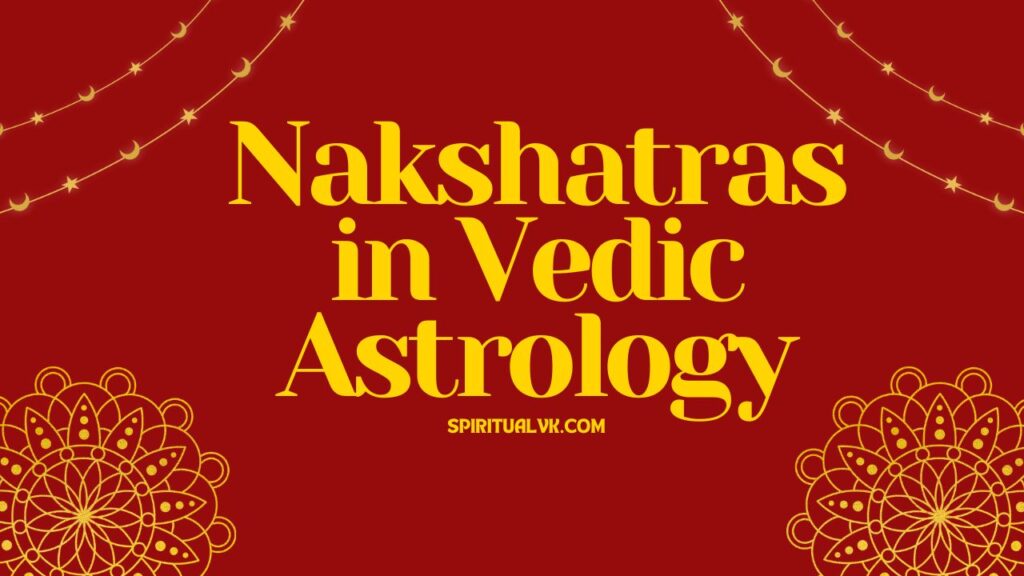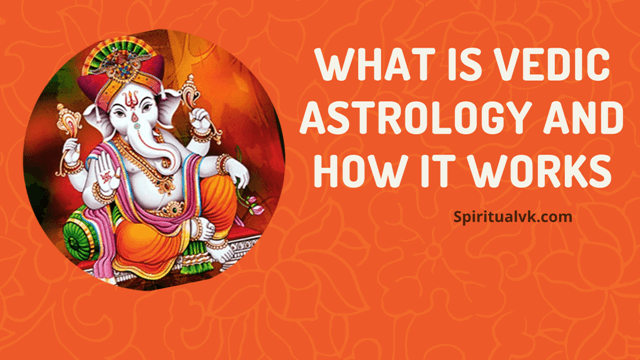Vedic astrology, an ancient Indian system of astrology, has long been used to understand human behavior, life patterns, and destiny. One of the most fascinating and intricate aspects of Vedic astrology is the concept of Nakshatras, or lunar mansions.
Nakshatras are the 27 distinct sections of the zodiac that play a crucial role in determining the unique characteristics and traits of individuals, along with the timing of events in their lives. Let’s dive into the mystical influence of Nakshatras and understand their significance in Vedic astrology.

What are Nakshatras?
Nakshatras, also known as lunar constellations, are a unique feature in Vedic astrology and represent the path taken by the Moon in the zodiac. The Moon, which moves through these constellations approximately every day, spends around 24 hours in each Nakshatra, thus influencing the astrological dynamics based on its position. Each Nakshatra is subdivided into four “padas” (quarters), with each quarter representing a particular quality or trait. This structure enables the Nakshatras to create a deep and personalized interpretation of an individual’s astrological profile.
In addition to offering insights into an individual’s personality, Nakshatras are believed to govern specific areas of life, including love, career, health, and spirituality. They are also linked with mythological stories and deities, giving each Nakshatra a unique personality and a divine association.
The Nakshatra System: Understanding the Basics
The Nakshatra system is based on the division of the 360-degree zodiac into 27 equal parts, with each Nakshatra covering 13 degrees and 20 minutes. The system of Nakshatras, believed to predate the 12-sign zodiac system, is unique to Vedic astrology. Here’s an overview of the structure:
- Ruling Planet: Each Nakshatra has a ruling planet, and this association impacts how the Nakshatra’s energy is expressed.
- Deity: Each Nakshatra is also associated with a specific deity. These deities embody unique qualities, influencing the Nakshatra’s traits.
- Symbol and Animal Totem: Every Nakshatra has a symbol and an animal totem, further amplifying its mystical energy and symbolic power.
- Padas (Quarters): Each Nakshatra is divided into four padas, with each pada covering 3 degrees and 20 minutes. These padas refine the influence of the Nakshatra, creating more nuanced personality traits.
Nakshatras and Personality Traits
In Vedic astrology, the Nakshatra in which the Moon is placed at the time of birth, known as the Janma Nakshatra, is particularly significant. It influences a person’s emotional disposition, general personality, and subconscious patterns. Let’s look at a few prominent Nakshatras to understand how they shape individual personalities:
- Ashwini Nakshatra: The first Nakshatra, Ashwini, is ruled by Ketu and symbolized by a horse. Known for its swift and dynamic nature, Ashwini represents speed, courage, and healing abilities. Those born under Ashwini are often energetic, driven, and have an innate desire to help others.
- Rohini Nakshatra: Ruled by the Moon and symbolized by a chariot, Rohini is considered one of the most auspicious Nakshatras. People born under Rohini are usually creative, attractive, and possess a charismatic personality. This Nakshatra is closely linked with material prosperity and emotional intelligence.
- Magha Nakshatra: Ruled by Ketu and symbolized by a royal throne, Magha is associated with ancestral heritage and pride. Those born under Magha are typically authoritative, loyal, and respectful of their lineage. They often possess a regal aura and are drawn to leadership roles.
- Moola Nakshatra: Moola, ruled by Ketu and symbolized by roots, is known for its deep and intense energy. People with this Nakshatra are inclined toward investigation, spiritual pursuits, and transformation. Moola natives have a knack for uncovering hidden truths and are known for their resilience.
- Revati Nakshatra: The last Nakshatra in the zodiac, Revati, is ruled by Mercury and symbolized by a fish. This Nakshatra represents nourishment, compassion, and spiritual growth. Revati natives are often gentle, kind, and sensitive to the needs of others. They may also be drawn to creative and artistic endeavors.
Each Nakshatra’s unique influence combines with the individual’s planetary placements, creating a highly personalized astrological profile.
Nakshatras and the Role of Deities
The deities associated with each Nakshatra further enrich their meanings and significance. These deities embody specific qualities and energies that influence the Nakshatra’s character. Here are a few examples:
- Ashwini Nakshatra is associated with the Ashwini Kumaras, the celestial twin physicians, representing health, healing, and vitality.
- Rohini Nakshatra is connected to Lord Brahma, the creator of the universe, symbolizing growth, creativity, and material abundance.
- Mrigashira Nakshatra is associated with Soma, the Moon god, emphasizing curiosity, exploration, and the quest for knowledge.
- Anuradha Nakshatra is ruled by Mitra, a god of friendship and compassion, highlighting loyalty, cooperation, and relationships.
These deities add a spiritual dimension to the Nakshatras, influencing the personality and life path of individuals born under each constellation.
Nakshatras and Relationships
Nakshatras play a key role in understanding relationship compatibility in Vedic astrology. The Nakshatra compatibility, also known as Ashtakoota Milan, is often assessed in Vedic astrology to determine the compatibility between partners, especially in marriage. Certain Nakshatras align well with others due to harmonious planetary rulers and complementary characteristics, making them more compatible. For example:
- Ashwini Nakshatra natives often get along well with those from Bharani and Revati due to their shared energetic and nurturing qualities.
- Magha Nakshatra individuals may find compatible partners in Purva Phalguni and Uttarashada Nakshatras, as they share similar values of loyalty and pride.
This Nakshatra-based approach to compatibility provides a deeper and more nuanced understanding of relationships beyond conventional zodiac matching.
The Influence of Nakshatras in Daily Life
In Vedic astrology, Nakshatras aren’t just used for personality analysis but also for practical applications in daily life. Specific Nakshatras are considered auspicious for certain activities:
- Ashwini Nakshatra is ideal for starting new ventures or undertaking journeys, given its swift and dynamic energy.
- Pushya Nakshatra is auspicious for initiating financial activities or spiritual practices, as it embodies nourishment and abundance.
- Hasta Nakshatra is favorable for activities requiring manual skills, like craftsmanship or artistry.
By aligning tasks with Nakshatra energies, individuals can amplify their success and ensure favorable outcomes. This approach is commonly applied in traditional Vedic practices like selecting a wedding date, purchasing property, or initiating new projects.
Nakshatras and Spiritual Growth
In addition to practical guidance, Nakshatras also play a role in an individual’s spiritual development. Certain Nakshatras are believed to have more spiritually inclined energies, making them suitable for meditation, yoga, and other introspective practices. Here’s a brief look at some Nakshatras known for their spiritual influence:
- Moola Nakshatra: Known for its connection to roots, Moola encourages deep inner reflection and spiritual transformation.
- Revati Nakshatra: Representing the end of the zodiac, Revati symbolizes spiritual liberation, compassion, and empathy.
- Shravana Nakshatra: With the influence of Lord Vishnu, Shravana emphasizes listening and understanding, making it ideal for meditation and mindfulness.
Conclusion
Nakshatras offer a rich and nuanced perspective on human life and behavior in Vedic astrology. They provide insight into personality traits, relationships, career paths, and spiritual development, offering a framework for personal growth and life alignment. The influence of Nakshatras reaches beyond individual characteristics, impacting compatibility, daily activities, and even spiritual practices.
Exploring the mystical influence of Nakshatras opens a path to deeper self-awareness and a greater understanding of one’s place in the universe. In a world increasingly fascinated by astrology, the Nakshatras stand as a testament to the wisdom of ancient Vedic practices, inviting us to connect with our inner selves and the cosmos.


